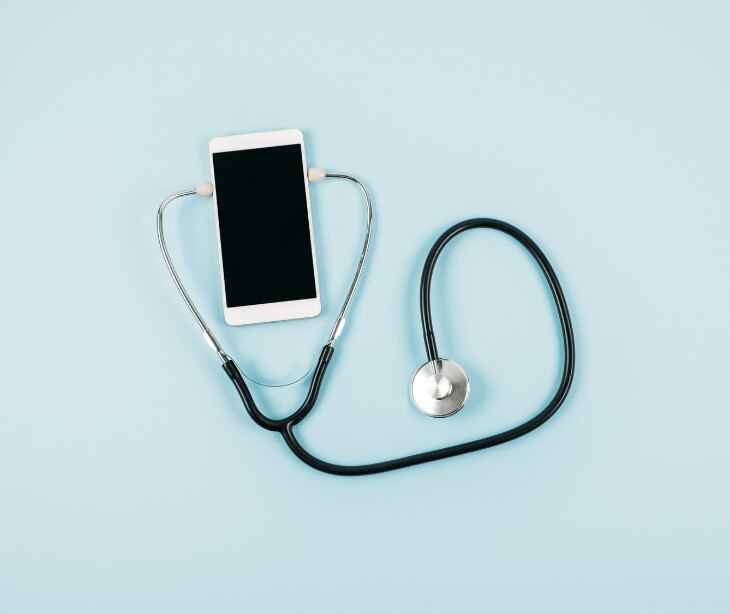
Telehealth has revolutionized healthcare delivery, offering convenient and accessible virtual care options for patients. However, the digital nature of telehealth raises unique challenges for protecting patient privacy and maintaining HIPAA compliance.
As telehealth adoption continues to grow, the importance of understanding and addressing the HIPAA implications of virtual care cannot be overstated. A 2020 article highlights how the rapid advancement of digital health technologies, including telehealth, has outpaced the development of privacy regulations, creating new challenges for protecting patient information.
Protecting patient privacy in telehealth is not just about following the law; it's about safeguarding patient trust. Research indicates that patient trust in providers is directly related to their privacy behaviors and attitudes. Prioritizing privacy in telehealth builds this trust, which is required for encouraging open communication and effective care.
Learn more: HIPAA compliance in a telehealth world
Understanding the HIPAA landscape in telehealth
HIPAA sets national standards for health information protections, which ensure protected health information (PHI) processed and utilized by covered entities is private and secure. PHI includes any information that can identify an individual and relates to their health status, treatment, or payment for healthcare services. In the context of telehealth, this encompasses a wide range of data, from video and audio recordings of virtual appointments to electronic health records accessed remotely.
While HIPAA remains a framework for healthcare privacy, it's important to recognize its limitations in the digital age. As noted in the 2020 article, HIPAA predates many of the digital health tools and practices common today. This gap between evolving technology and outdated regulations creates a complex environment for telehealth providers. A 2022 article on HIPAA and telehealth adds that HIPAA "clearly is no longer sufficient to guarantee the privacy of the health information it was enacted to protect." While adhering to HIPAA's core principles is necessary, it's important to be aware of its limitations and adopt additional safeguards to protect patient privacy in the context of telehealth.
HIPAA encompasses two major rules: the Privacy Rule, which protects all identifiable patient data, and the Security Rule, which protects electronically transmitted and stored PHI. As noted in a Psychiatry Online, being HIPAA compliant in telehealth isn't just about technology; it also involves physical, environmental, and process security measures.
Maintaining HIPAA compliance in telehealth requires careful attention to several key areas:
- Secure communication platforms: Telehealth platforms must be secure and HIPAA compliant, using encryption and other security measures to protect PHI transmitted during virtual appointments. Avoid using non-compliant platforms like standard video conferencing tools, as these lack the necessary security features. Dr. Shabana Khan emphasizes that "health care professionals practicing telehealth must comply with HIPAA’s Security Rule and cannot use standard video technologies such as Zoom, Skype, or Facebook to meet with patients." Dr. John Torous adds that using HIPAA-compliant versions of common platforms, along with robust physical and process safeguards, is essential for compliance. Paubox Email Suite offers HIPAA compliant email solutions that can be integrated with popular platforms, ensuring secure communication for telehealth-related administrative tasks.
- Data storage and access controls: PHI collected and stored during telehealth consultations must be protected from unauthorized access. Implement strong access controls, encryption, and other security measures to safeguard patient data. The increasing digitization of health data, as discussed in the 2020 article on health information privacy laws, necessitates robust data storage and access control measures. The increasing use of apps and wearable devices further complicates this landscape, adding another layer of complexity to data storage and access, as noted in the 2022 article. Ensure data from telehealth sessions is stored securely and only accessed by authorized individuals.
- Patient authorization and consent: Obtain explicit patient consent for telehealth consultations and ensure patients understand how their information will be used and protected. An HHS resource emphasizes the importance of explaining telehealth and the specific technologies used to patients. Clearly explain the risks and benefits of telehealth and provide opportunities for questions. Maintaining environmental privacy during consultations, both for the clinician and the patient, is also important, as noted in the 2023 Psychiatric News article.
- Business associate agreements (BAAs): If using third-party telehealth platforms or vendors who handle PHI, ensure you have a signed business associate agreement (BAA) in place. This agreement outlines the vendor's responsibilities for protecting PHI.
Choosing the right telehealth platform
Selecting a HIPAA compliant telehealth platform is required for protecting patient privacy. Look for platforms that offer:
- Encryption: Encryption ensures that all data transmitted during telehealth sessions is secure and unreadable by unauthorized individuals. This is a fundamental requirement for HIPAA compliance.
- Secure messaging: Secure messaging features allow for HIPAA compliant communication between providers and patients outside of virtual appointments. This can be used for appointment scheduling, medication refills, or general inquiries.
- Access controls: Access controls limit access to patient data based on roles and permissions, ensuring that only authorized individuals can view sensitive information.
- Audit trails: Audit trails track access to patient data, providing a record of who accessed what information and when, allowing organizations to monitor compliance and investigate breaches if needed.
- Data backup and recovery: Regular data backups and a recovery plan are necessary for protecting against data loss due to technical issues or cyberattacks.
Before selecting a platform, thoroughly vet the vendor's security practices and ensure they have a signed BAA in place. Don't hesitate to ask questions about their security measures, data storage practices, and compliance certifications.
Implementing best practices for HIPAA compliant telehealth
Beyond choosing the right platform, implementing best practices is a big part of maintaining HIPAA compliance in your telehealth operations:
Develop clear policies and procedures
Create comprehensive policies and procedures that address all aspects of HIPAA compliance in telehealth, from patient consent and data storage to security incident response. Train all staff members on these policies and ensure they are consistently followed.
Regularly assess your telehealth operations for potential vulnerabilities and implement appropriate safeguards. Risk assessments should cover all aspects of your telehealth program, including technology, physical security, and administrative processes.
Provide ongoing staff training
Regularly train your staff on HIPAA regulations, security best practices, and the proper use of your telehealth platform. Training should cover topics like patient privacy, data security, and incident response. As a study on information security awareness programs highlights, ongoing training is required for reinforcing best practices and maintaining a strong culture of compliance
Educate patients about privacy and security risks
While not explicitly required by HIPAA, educating patients about potential risks can strengthen their understanding of telehealth and build trust. The HHS provides helpful tips for patients on protecting their information during telehealth sessions. Discuss potential risks like viruses and malware, unauthorized access, and accidental disclosures, and explain how patients can mitigate these risks by having:
- A private location: Advise patients to have their telehealth appointments in a private location.
- Device security: Encourage patients to use a personal computer or mobile device for telehealth sessions, avoid public Wi-Fi, and install security updates.
- Data minimization: Advise patients to delete health information from their devices when no longer needed and be cautious about public USB charging stations.
- Authentication and encryption: Encourage patients to enable two-step or multi-factor authentication and encryption tools.
- Communication and verification: Ensure patients know how and when you will contact them and encourage them to verify suspicious links or emails.
- Provide information about vendor practices: If you use third-party telehealth vendors, be transparent with patients about their privacy and security practices. The HHS suggests providing vendor names and information about where to find their privacy policies. Explain the safeguards the vendor uses and whether the platform uses online tracking technologies.
- Inform patients about their right to file a complaint: Let patients know they have the right to file a privacy complaint if they believe their health information has been compromised. Provide information about the OCR complaint portal, where they can file a complaint online.
Addressing ethical considerations in telehealth
HIPAA compliance forms the legal foundation for protecting patient privacy in telehealth, but ethical considerations should also guide your practice. Transparency and open communication with patients are paramount for building trust. Inform patients about how their data is being used and protected, and address any concerns they might have. A study on trust and digital privacy in healthcare emphasizes that transparency and respecting individual preferences regarding data use are necessary for maintaining patient trust. This is especially important in telehealth, where the digital divide and varying levels of technological literacy can create disparities in access and understanding. Strive to provide equitable access to telehealth services and ensure all patients, regardless of their technical skills, feel comfortable and confident using the technology.
FAQs
What are the most important HIPAA requirements for telehealth?
Ensuring the confidentiality, integrity, and availability of PHI during virtual visits should be a priority. Organizations should use secure communication platforms with encryption, implement strong access controls and audit trails, obtain patient authorization for telehealth services, and have BAAs in place with any third-party vendors who handle PHI.
Does HIPAA apply to all telehealth services?
Yes, HIPAA applies to all telehealth services that involve the use or disclosure of PHI, including video conferencing appointments, remote patient monitoring, secure messaging, and any other telehealth services where PHI is transmitted or stored electronically. Even telehealth services that don't directly involve patient care, such as administrative tasks or marketing communications, are still subject to HIPAA if they involve PHI.
How does telehealth affect patient privacy?
The digital nature of telehealth introduces new vulnerabilities for PHI, such as the risk of data breaches, unauthorized access, or accidental disclosures. Using non-compliant communication platforms, insecure data storage methods, or failing to obtain proper patient consent can all compromise patient privacy.


%20-%202024-11-30T133454.375.jpg)
%20-%202024-12-02T061409.199.jpg)
